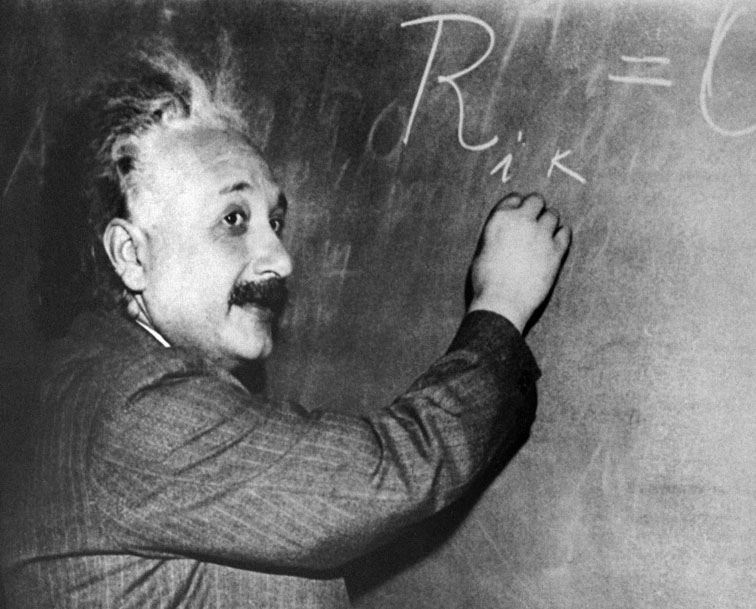
Motivating Students Who Struggle
contributed by Steve Miller
In school, we figured out pretty quickly who was smart and who was “dumb.”
Smart students made As, or at least were capable of making As if they put their minds to it. Teachers reinforced this definition by frequently calling certain students “bright,” or “having lots of potential” when they aced tests or wrote brilliant papers. While they were too polite to call the D students “dumb” and “losers,” everyone knew that referring to A students as smart implied that B students were not quite as smart, C students were slow, and D and F students were, well, “dumb.”
Today’s research indicates we were dead wrong. The implications to life in general and education in particular are far-reaching and often ignored.
See also A Very, Very Powerful Motivational Video For Teens
Wildly Diverse Students
Our brains are astoundingly complex, and just as astoundingly unique. Albert Einstein’s mind was exquisitely suited for performing mental experiments, allowing him to dream up E=MC2. But he was lame at family relationships, terribly forgetful, and wasn’t a great student. He began talking very late, was asked to leave his high school, flunked first year physics, graduated last in his class from college.
During his Princeton years, his wife watched for him as he walked home from his office, because often he’d forget whether he was coming or going and would head back to the school. She said he never drove a car because “it was too complicated for him.”
Fascinating.
The math behind his famous equation is quite complex; but it’s an entirely different type of complexity than that required to drive a car – apparently a type of complexity that Einstein’s mind wasn’t suited to unravel.
So was Einstein smart? Certainly! But his brilliance shined in a very specific field – theoretical physics. He was average in some areas, probably below average in learning languages. In other endeavors, he was just plain dumb.

Other people we deem geniuses had their dumb sides:
- Sam Walton was a genius at retailing. But his first employer almost fired him because he couldn’t handle a cash register. (He kept him only because he was such a great salesman.) Walton’s secretary eventually refused to set up appointments for him because people would fly into town to meet him, only to discover he was gone. He couldn’t keep up with a schedule.
- Leonardo DaVinci was a genius at artistic and creative endeavors, but had a terrible time completing tasks. He completed many of his drawings and writings while he was being paid to do something else. In all probability, he’d have been a poor student in today’s schools, which require students to frequently complete assignments outside of class.
- Warren Buffet is a genius at understanding businesses and investing. But he admits that his gifts could only flourish in a country with a growing economy. Had he been born in another era, according to Buffet, he’d have likely been eaten by something higher on the food chain.
- C.S. Lewis was brilliant at writing and understanding literature. But Math baffled him. He admits in his autobiography that he got into Oxford only because ex-servicemen were exempted from passing a math exam.
- Steven Spielberg is brilliant at directing movies, but his rote memory was so poor that he couldn’t memorize parts for his school plays. He helped with the stage sets instead. His C average kept him from getting into a top film school.
These examples aren’t striking anomalies, cherry-picked from a much larger group of people who are more balanced geniuses. They’re pretty consistent with what we find in everybody, and it accords with the latest research:
- a great body of evidence on how our brains develop and function and
- large-scale assessments of how strengths function in the workplace.
Bottom line: We and our students are typically a complex hodgepodge of genius and average and stupidity, often brilliant at one task and hopeless at another.
How To Motivate Students That Struggle
1. Help students identify their gifts.
A big part of success in life is finding gifts as early as possible and discovering ways to develop them, rather than focusing myopically on weaknesses.
2. Use their strengths to support their weaknesses.
As one management book suggests, catch students doing something right, rather than commenting only when you catch them doing something wrong. Positive reinforcement is a powerful motivator.
3. Make encouraging comments specific, rather than general.
Telling a student “You’re smart!” after making the highest grade on a test may tell the rest of the students, just as clearly “you’re not as smart.” Rather, say more specifically, “You’re quick at Algebra; you may have special potential there!”
4. Guide students to ways they can develop their strengths.
When I see a progress report with an A, two Bs and a D, I’m tempted to briefly compliment the A but quickly move to strategizing about ways to bring up the D. And understandably so. It’s important to pass! But this may point to an obsession with shoring up weaknesses to the detriment of building on our strengths.
A growing body of evidence finds that our greatest room for improvement is in our area of strength rather than weakness. So why don’t we spend at least equal time exploring the meaning of that A? Could it show an area of strength? Are there ways we could continue to develop this strength, both inside and outside of school?
Thus Spielberg’s parents allowed him to make movies for his scout troop and make movies for the neighborhood kids in middle school. Bill Gates’ parents and school allowed him to pursue his passion for programming and to work after school testing a computer system at a technology company.
5. Help them see academics as a strategy, not a destination.
When professor Thomas Stanley studied first generation millionaires to discover why they were so successful, he found that a surprising number were mediocre students. On average, they were C students. Yet, often we give students the impression that if they’re C students, they’re destined to a C life.
One day as I visited my children’s elementary school, I was joined by the principal, who was carrying a bouquet of wild flowers he had picked from the front lawn. He explained that one of his students was in a community play over the weekend, and he wanted to honor her. Now I know nothing about this student – her particular strengths and weaknesses. But that day she felt honored, special. That one event may have shaped her view of education as something positive rather than negative.
It’s no wonder that this principal’s school was the most positive educational environment I’ve ever encountered. His teachers followed his lead. Teachers and staff and administrators wield that incredible power to change lives through encouragement. Let’s use it lavishly.
J. Steve Miller leads Legacy Educational Resources (www.character-education.info) and teaches at Kennesaw State University. Connect with him at www.jstevemiller.com; How To Motivate Students That Struggle